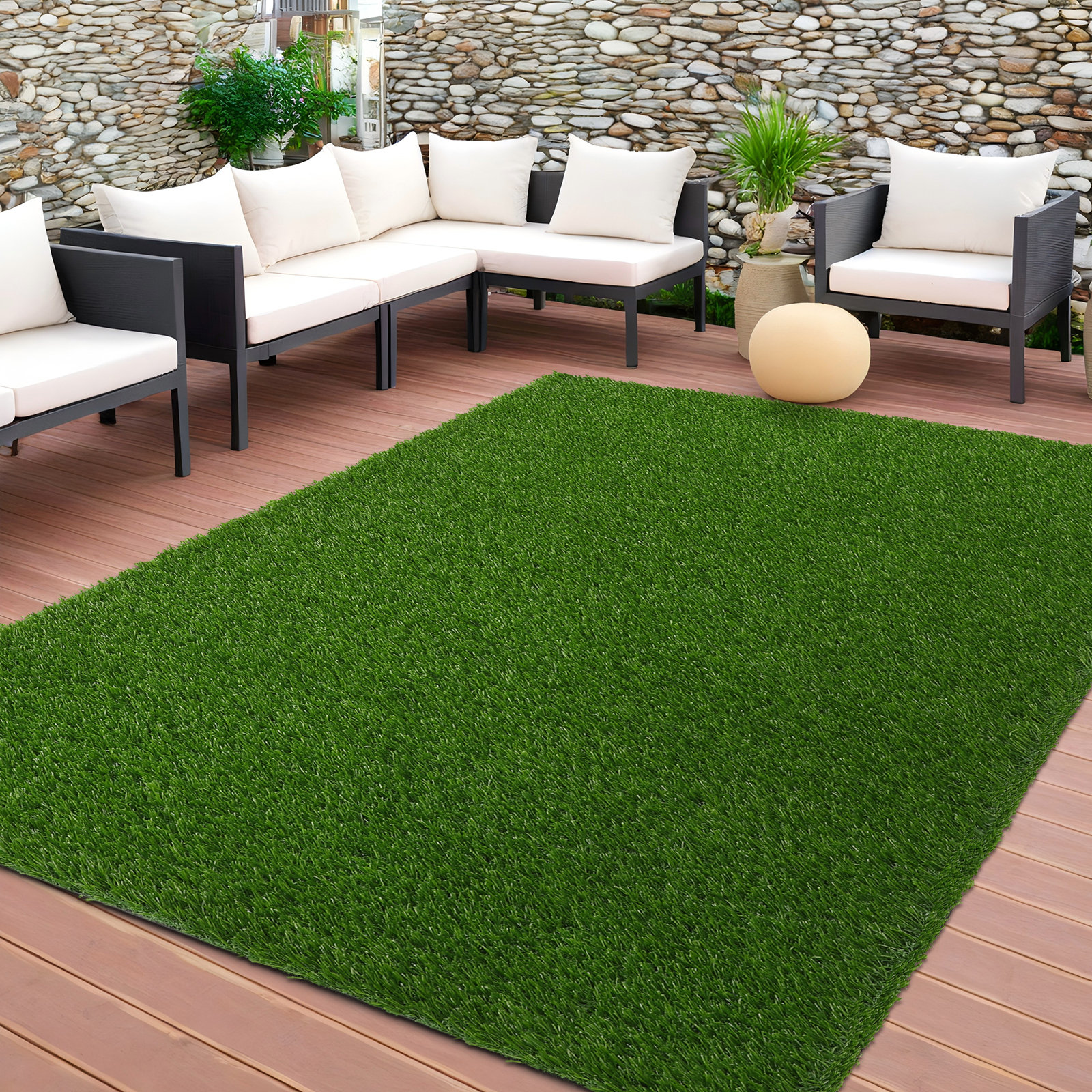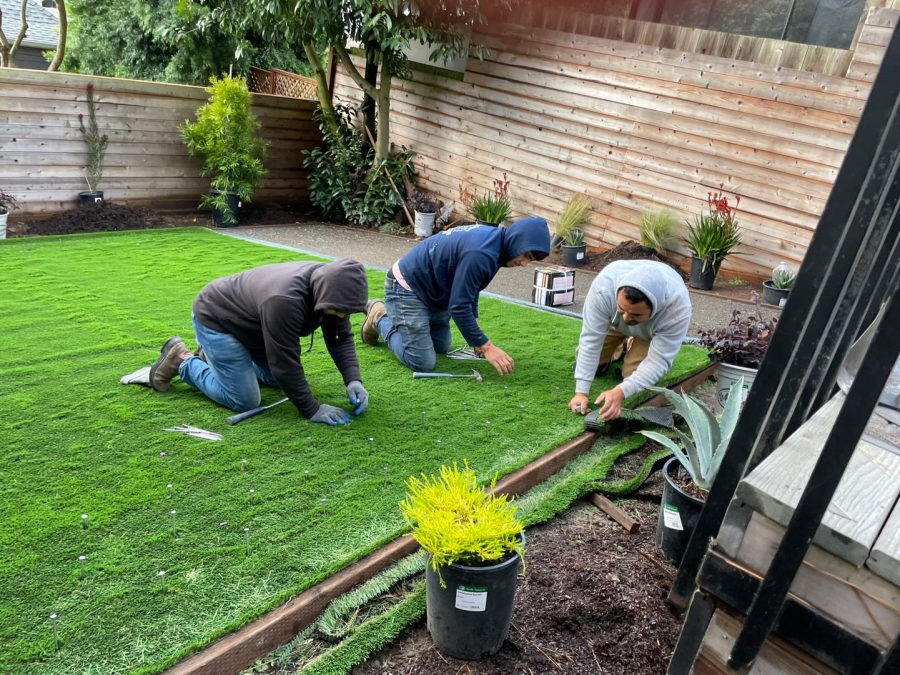Durable Arizona Artificial Turf for Home and Commercial Applications
Durable Arizona Artificial Turf for Home and Commercial Applications
Blog Article
Explore the Environmental Conveniences of Opting for Synthetic Grass Solutions
The adoption of artificial lawn options provides a compelling possibility to deal with pressing ecological difficulties. By considerably lowering water use and reducing the application of hazardous chemicals, these choices not just promote lasting landscaping yet likewise protect local ecosystems. In addition, the lower carbon impact connected with decreased upkeep activities adds to a more lasting approach to land administration. However, the ramifications of these advantages extend past mere preservation initiatives, increasing inquiries about their lasting influence on habitat conservation and general eco-friendly balance. Discovering these dimensions reveals an intricate interaction worth taking into consideration.
Water Preservation Conveniences
One of the most substantial advantages of synthetic turf is its capacity to save water. In contrast, fabricated grass does not need watering, dramatically lowering the general demand for water sources.
By eliminating the demand for routine watering, artificial grass adds to lasting landscape practices and assists mitigate the environmental influence of extreme water intake. The conservation of water prolongs to the decrease of runoff, which can lead to soil disintegration and river pollution.
Furthermore, the installment of synthetic grass permits home owners and towns to designate water sources more effectively, concentrating on crucial uses such as drinking water and agriculture. The change in the direction of artificial grass not only advertises liable water use yet also aligns with broader ecological objectives targeted at maintaining natural deposits.
As communities increasingly prioritize sustainability, the water conservation benefits of synthetic grass provide an engaging situation for its fostering in property and business landscape design jobs.
Minimized Chemical Use
The shift to man-made grass substantially reduces the reliance on chemical treatments commonly used in all-natural yard upkeep. Typical lawn administration normally includes the application of pesticides, plant foods, and herbicides to promote growth and control pests. These chemicals can pose threats to human health and wellness, regional wildlife, and the setting, adding to soil and water contamination.
In contrast, fabricated grass gets rid of the need for these unsafe materials. When installed, it calls for very little upkeep, largely being composed of regular cleansing and seldom infill replenishment. This decrease in chemical usage not just benefits the prompt environment yet likewise adds to wider environmental stability. By reducing the launch of synthetic compounds into the ecological community, synthetic lawn promotes healthier soil and water systems.
Furthermore, the lack of chemical runoff connected with synthetic grass installments helps safeguard neighborhood rivers from contamination, sustaining marine life and maintaining biodiversity. Phoenix turf companies. As areas increasingly prioritize sustainable methods, going with synthetic grass provides a sensible solution that aligns with environmental preservation objectives. Via this change, homeowner can appreciate lavish green spaces without jeopardizing environmental wellness, leading the way for an extra lasting future
Lower Carbon Footprint

In addition, the installation of synthetic grass can special info cause significant water preservation. Natural lawns require significant amounts of water for irrigation, which not just includes in the carbon impact related to water removal and therapy but additionally strains local water resources. On the other hand, synthetic grass requires minimal maintenance, calling for no watering, thus considerably reducing water usage and its associated power costs.
Additionally, the durability of man-made grass contributes to its reduced carbon impact. With a lifespan of up to 15 years or more, the demand for constant substitutes is reduced, leading to less waste and lower power usage in manufacturing and taking care of typical yard options. In general, synthetic turf offers a lasting choice for environmentally aware landscape design.
Habitat Preservation
Environment conservation is a vital consideration in the debate over landscape design choices, particularly when contrasting synthetic grass to all-natural lawn. Natural yard lawns typically require considerable upkeep, including using chemicals, herbicides, and fertilizers, which can negatively impact neighborhood environments. These chemicals can leach right into the dirt and waterways, damaging native plants and animals and disrupting local habitats.
On the other hand, synthetic grass offers a possibility to lower the ecological footprint of landscaping. By choosing artificial turf, house owners can reduce the disruption of natural habitats connected with traditional yard care techniques. Synthetic lawn eliminates the requirement for damaging chemicals, therefore safeguarding close-by wild animals and keeping the this page integrity of surrounding environments. In addition, the installation of synthetic grass can bring about the conversion of previous grass areas into more biodiverse landscapes, such as pollinator yards or indigenous plant locations, which can sustain neighborhood wild animals.
Ultimately, the transition to synthetic grass not only preserves water and lowers upkeep initiatives however also fosters an extra unified connection between human activities and the natural surroundings, promoting habitat conservation in the procedure.
Long-Term Sustainability
Long-lasting sustainability is a critical consider examining the advantages of artificial lawn over standard turf lawns. Among the most significant advantages of synthetic grass is its durability; it can last up to 15-20 years with marginal upkeep, whereas natural yard needs frequent reseeding and substitute. This durability decreases the demand for continuous resources, such as water, plant foods, and pesticides, which are crucial for preserving a healthy turf lawn.
In addition, synthetic lawn adds to a decrease in carbon discharges associated with yard care devices. Traditional yards usually need gas-powered lawn mowers, trimmers, and blowers, all of which add to air contamination. Arizona artificial turf. In comparison, synthetic grass removes the requirement for such devices, advertising a cleaner environment
Additionally, the manufacturing of synthetic lawn increasingly uses recycled products, enhancing its sustainability profile. As makers take on environment-friendly techniques, the environmental footprint of synthetic grass remains to decrease.

Verdict
The adoption of artificial grass solutions offers considerable environmental benefits, including considerable water conservation, minimized reliance on unsafe chemicals, and a lower carbon impact. Moreover, synthetic grass aids in protecting natural habitats by decreasing land disturbance and advertising long-term sustainability via the use of long lasting materials. Collectively, these aspects underscore the capacity of fabricated turf to contribute favorably to ecological health and provide a sensible alternative to conventional landscape design techniques in an increasingly resource-conscious world.
In comparison, fabricated turf does not need watering, dramatically reducing the overall demand for water resources. By lessening the launch of artificial substances into the community, synthetic grass advertises much healthier dirt and water systems.
Furthermore, the installation of synthetic grass can result in considerable water preservation. In contrast, man-made grass requires very little upkeep, needing no watering, therefore dramatically reducing water usage and its associated energy costs.

Report this page